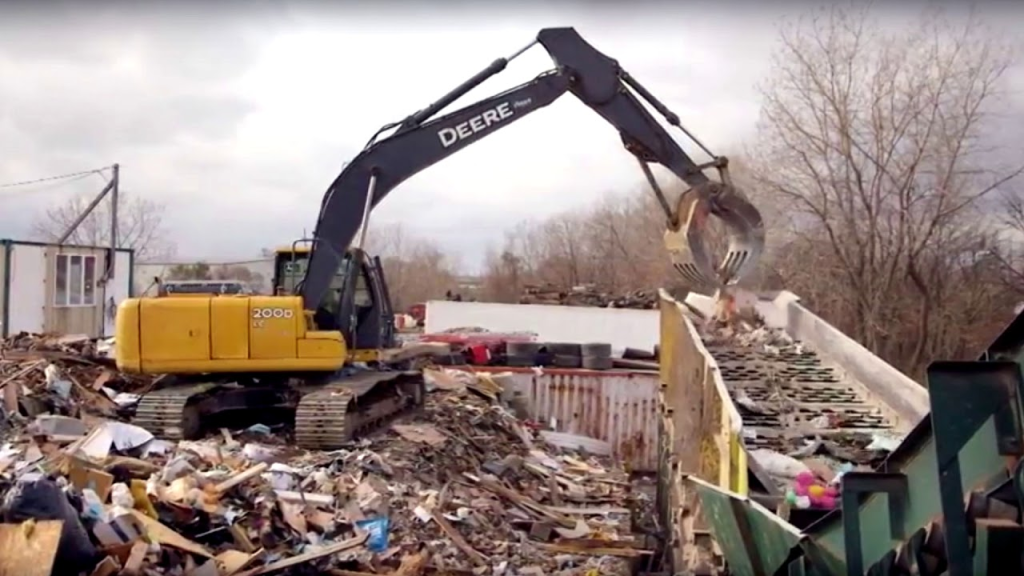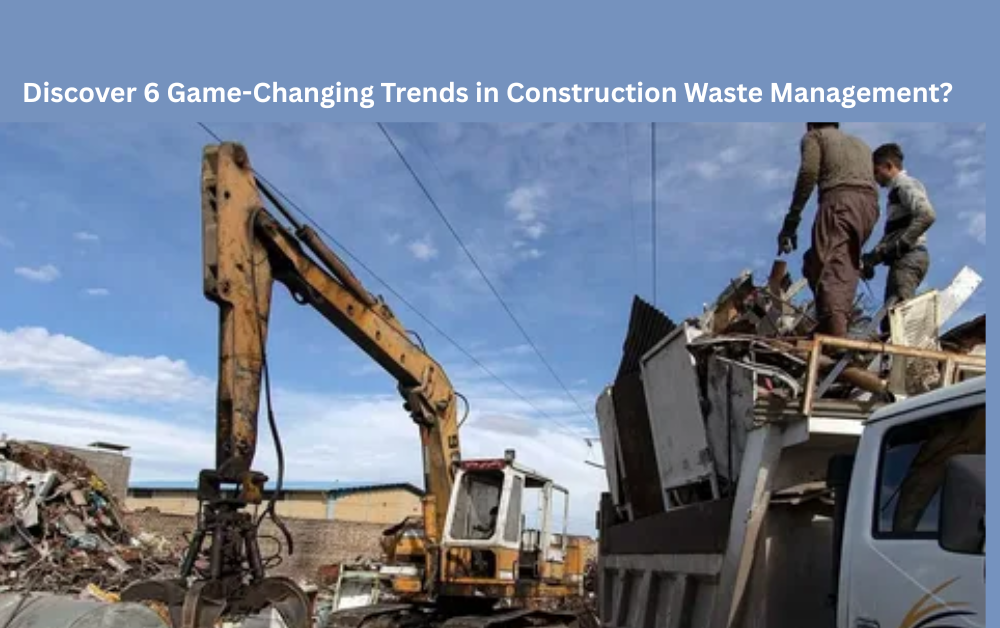The construction industry stands at a pivotal crossroads, balancing rapid urban growth with growing environmental responsibilities. Managing construction waste effectively is no longer just a regulatory requirement but a business imperative that influences costs, sustainability, and brand reputation. As traditional practices give way to innovation, five game-changing trends are dramatically reshaping how construction waste is managed. These trends enable the industry to minimize environmental impact while maximizing operational efficiency and economic value.
NOTE: Al Merzaam excelled in Construction Waste Management by transforming construction debris into reusable resources through advanced processing. Their proactive approach ensured regulatory adherence and cost savings. Choose Al Merzaam for efficient and responsible waste management solutions. Contact Al Merzaam today to elevate your sustainability efforts.
Embracing Circular Construction: Closing the Loop on Waste
Circular construction is redefining waste from a byproduct into a valuable resource. Traditional construction models have long been linear: extract raw materials, build, demolish, and discard. Circular construction flips this model by promoting reuse, recycling, and designing buildings with their entire lifecycle in mind.

Design for disassembly is a core principle, where structures are built to be deconstructed without damage, allowing components like steel beams, timber, and concrete to be reclaimed and reused. Modular construction supports this by using prefabricated components manufactured off-site with precision, resulting in less material waste.
Beyond material savings, circular construction reduces landfill pressure, lowers energy consumption associated with raw material extraction, and creates opportunities for secondary markets in reclaimed building materials. This shift toward circularity requires collaboration across architects, engineers, and contractors to embed sustainability into design and project planning stages.
Digital Transformation: The Backbone of Modern Waste Management
The infusion of digital technologies into construction is revolutionizing waste management by enhancing data accuracy, communication, and operational control. Building Information Modeling (BIM) has emerged as a vital tool, allowing detailed visualization and precise calculation of material requirements before construction begins. This drastically reduces ordering excess materials, a primary source of waste.
Drones offer real-time aerial site inspections, helping identify waste hotspots and monitor compliance with segregation practices. Coupled with IoT sensors embedded in machinery and waste containers, companies can track waste volumes, contamination levels, and disposal frequency.
Centralized digital platforms enable stakeholders—from site managers to environmental officers—to collaborate seamlessly, ensuring transparency and enabling timely interventions. Data-driven decision-making powered by AI analytics optimizes routing for waste collection vehicles, reducing fuel consumption and emissions.
Together, these technologies streamline operations, improve accountability, and provide comprehensive reporting essential for regulatory compliance and corporate sustainability goals.
Prefabrication and Modular Construction: Precision That Cuts Waste
Prefabrication and modular construction are rapidly gaining traction as powerful waste reduction techniques. By shifting construction processes from unpredictable, weather-dependent site environments to controlled factory settings, these methods offer unparalleled precision and efficiency.
Factories can optimize material cutting, use leftovers effectively, and implement strict quality control—eliminating much of the scrap produced on traditional construction sites. Modular units can be manufactured in standard sizes and assembled swiftly, minimizing on-site waste.
Furthermore, prefabrication allows for concurrent construction phases, reducing project timelines and associated costs. Its adaptability enables easier building upgrades or relocations, supporting circular economy principles by prolonging building lifecycles and minimizing demolition waste.
The integration of prefabrication is especially impactful in large-scale housing, commercial developments, and infrastructure projects where waste volumes are substantial.
Sustainable Material Innovations: Building with the Planet in Mind
Material selection profoundly influences construction waste profiles. Recent advances have introduced a variety of sustainable and eco-friendly materials designed to minimize environmental harm and facilitate waste reduction.
Recycled aggregates replace natural stone in concrete, reducing quarrying impacts. Engineered wood products made from fast-growing species or wood waste offer strength and sustainability. Bio-based composites, hempcrete, and other natural materials present biodegradable alternatives to traditional synthetics.
In addition to these materials being sustainable in origin, many are designed for easier reuse or recycling at end-of-life. Low-VOC paints and finishes reduce toxic waste streams, improving indoor air quality and environmental compliance.
Choosing sustainable materials aligns with green building certification systems such as LEED or BREEAM, which increasingly influence client preferences and regulatory frameworks.
Enhanced Compliance and Waste Reporting: Driving Accountability
Stricter environmental regulations worldwide are compelling construction firms to elevate their waste management practices. Compliance now extends beyond mere disposal to comprehensive tracking, reporting, and reduction mandates.
Innovative reporting systems leverage digital platforms to document waste generation, segregation efficiency, transportation, and final treatment or disposal. Automated data collection reduces errors and labor while ensuring transparency for auditors and stakeholders.
These systems also facilitate benchmarking against industry standards and corporate sustainability targets, encouraging continuous improvement. Failure to comply with evolving regulations can result in hefty fines, project delays, and reputational damage.
Leading firms adopt these tools proactively, integrating compliance into their project management workflows and fostering a culture of environmental responsibility.
The Role of Education and Training in Effective Construction Waste Management
An often overlooked but vital aspect of advancing construction waste management is investing in education and training. Even with the best technologies and strategies in place, the success of waste management depends heavily on the people executing the processes.
By educating workers, site managers, and contractors about the importance of waste reduction, segregation, and recycling, construction companies foster a culture of environmental responsibility. Training programs equip teams with practical skills to handle materials correctly, identify recyclable waste, and adhere to regulatory requirements.
Ongoing education also encourages innovation and continuous improvement, empowering staff to suggest new ideas and solutions for waste minimization. Moreover, well-trained teams help avoid costly mistakes, ensure safety, and maintain compliance, which ultimately benefits project efficiency and sustainability.
Investing in workforce training transforms construction waste management from a compliance task into a proactive, value-creating practice that drives long-term business success.
Conclusion
Construction waste management is no longer an afterthought but a dynamic field undergoing rapid innovation. The five trends outlined—circular construction, digital transformation, prefabrication, sustainable materials, and enhanced compliance—are collectively reshaping how waste is minimized, managed, and monetized.
Adopting these game-changing trends enables construction firms to reduce costs, lower environmental impacts, and improve regulatory compliance. Moreover, they open pathways to new business models and markets focused on sustainability.
For any construction stakeholder aiming to thrive amid tightening environmental scrutiny and evolving client expectations, embracing these innovations is essential. They represent the future of waste management: smarter, cleaner, and more efficient.
For More Isightful Articles Related To This Topic, Feel Free To Visit: penwhatmatters








